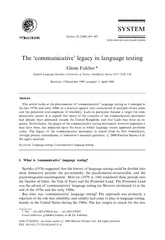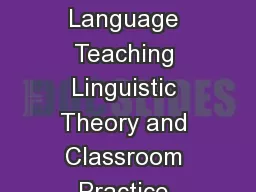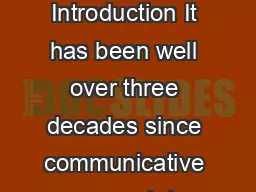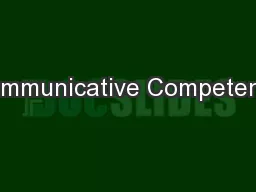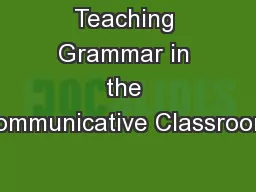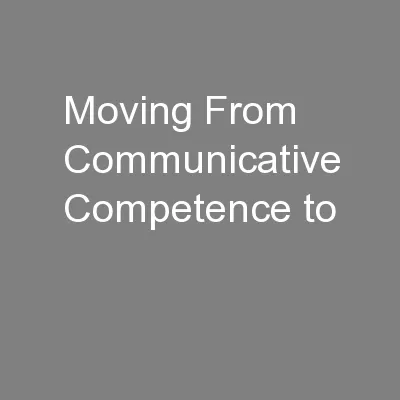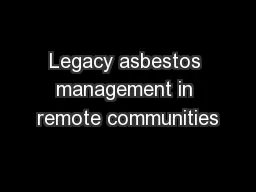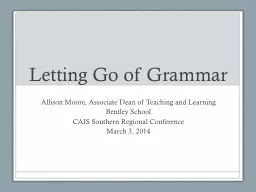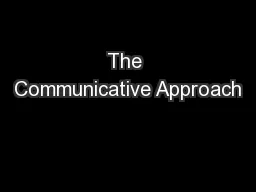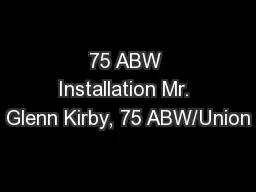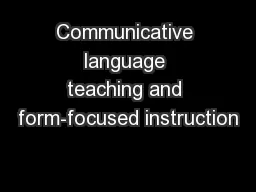PDF-The communicative legacy in language testing Glenn Ful
Author : karlyn-bohler | Published Date : 2015-05-18
Lado in particular became a target for com municative testers It is argued that many of the concerns of the communicative movement had already been addressed outside
Presentation Embed Code
Download Presentation
Download Presentation The PPT/PDF document "The communicative legacy in language tes..." is the property of its rightful owner. Permission is granted to download and print the materials on this website for personal, non-commercial use only, and to display it on your personal computer provided you do not modify the materials and that you retain all copyright notices contained in the materials. By downloading content from our website, you accept the terms of this agreement.
The communicative legacy in language testing Glenn Ful: Transcript
Download Rules Of Document
"The communicative legacy in language testing Glenn Ful"The content belongs to its owner. You may download and print it for personal use, without modification, and keep all copyright notices. By downloading, you agree to these terms.
Related Documents

